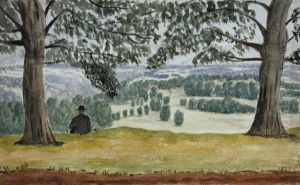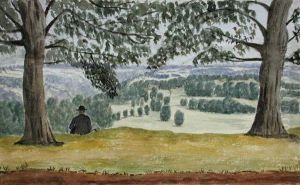Catherine Maud Nicholls Paintings
Catherine Maud Nicholls, an artist whose contributions spanned across painting, textiles, and other decorative arts, was born in 1860 and passed away in 1952. Nicholls’ work is often associated with the Arts and Crafts Movement, a collective of artists and designers in the late 19th and early 20th centuries who advocated for traditional craftsmanship, the use of natural forms, and the importance of beauty in everyday objects. Her career unfolded during a period when the role of women in the arts was undergoing significant changes, and she is remembered as a pioneer among female artists of her time.
Nicholls received her artistic training in an era when opportunities for women in the arts were expanding, allowing her to study at notable institutions and under respected artists of the period. Throughout her career, Nicholls demonstrated a remarkable versatility, working in various mediums including watercolor, embroidery, and textile design. Her work often featured floral and natural motifs, a hallmark of the Arts and Crafts Movement, and she was known for her meticulous attention to detail and her ability to infuse life and vibrancy into traditional forms.
Despite her contributions to the arts, Nicholls, like many of her female contemporaries, faced challenges in gaining the same recognition as her male counterparts. Nevertheless, she managed to carve out a successful career and her works were exhibited in various prestigious venues. Today, Nicholls' creations are celebrated for their beauty and craftsmanship and are studied for their contribution to the Arts and Crafts Movement and the broader narrative of women's roles in the art world.
Nicholls' legacy is not only found in her artistic output but also in her influence on future generations of artists. She was an advocate for the education of women in the arts, believing in the power of art to elevate and enrich lives. Her work remains an inspiration for those who value the intersection of beauty, craftsmanship, and social purpose in art.


